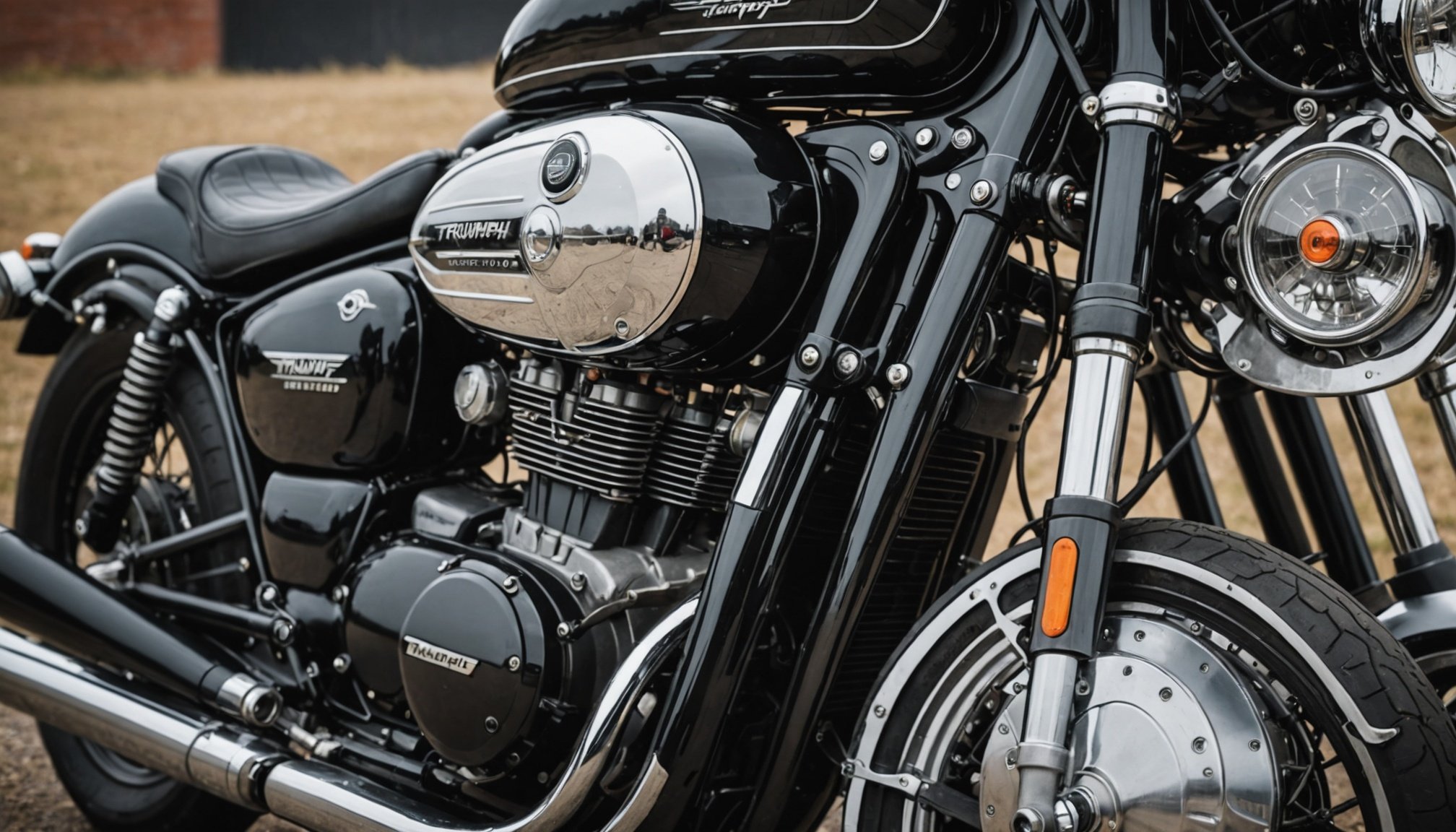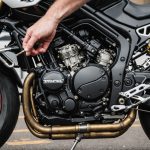Understanding the EFI system on your Triumph Bonneville Bobber is essential for optimal performance. This guide provides step-by-step instructions for diagnosing and repairing common issues, enhancing your riding experience. Whether you're a seasoned mechanic or a first-time DIYer, clear explanations and practical tips will empower you to tackle EFI challenges effectively. Uncover potential problems, boost engine efficiency, and gain confidence in your repair skills with this comprehensive resource. Get ready to breathe new life into your beloved motorcycle.
Understanding EFI Systems
Electronic Fuel Injection (EFI) systems are crucial in modern motorcycles, including the Triumph Bonneville Bobber. These systems ensure optimal fuel delivery, enhancing performance and efficiency. Unlike traditional carbureted systems, EFI systems use electronic controls to manage the fuel-air mixture precisely.
Have you seen this : Step-by-Step Guide to Replacing the Air Temperature Sensor on Your Triumph Street Triple
Key Components of EFI Systems
In the Triumph Bonneville Bobber, the EFI system comprises several essential components:
- Fuel Injector: Delivers fuel into the engine's combustion chamber.
- ECU (Engine Control Unit): Acts as the brain, controlling the fuel injection process.
- Oxygen Sensor: Monitors exhaust gases to adjust the fuel mixture for optimal combustion.
- Throttle Position Sensor: Detects the throttle opening to regulate fuel delivery.
EFI vs. Carbureted Systems
EFI systems offer several advantages over carbureted systems. They provide more accurate fuel management, leading to better fuel efficiency and reduced emissions. EFI systems adapt to changing conditions, such as altitude and temperature, ensuring consistent performance. In contrast, carbureted systems require manual adjustments and are less efficient in varying environments.
Also read : Mastering the Air-Fuel Ratio: Unlock Enhanced Engine Performance for Your Kawasaki Vulcan 900 Custom
Understanding EFI systems in motorcycles like the Triumph Bonneville Bobber is essential for appreciating their role in improving modern motorbike performance and reliability.
Common EFI Issues
When riding your Triumph Bonneville Bobber, encountering EFI problems can be frustrating. Recognising symptoms early is crucial for effective troubleshooting.
Symptoms of EFI System Failures
Common signs of EFI issues include erratic idling, difficulty starting, and poor throttle response. These symptoms often indicate underlying motorcycle issues that require attention.
Common Causes of EFI Issues
Several factors can lead to EFI problems. Sensor failures, such as a malfunctioning oxygen sensor, can disrupt the fuel-air mixture, causing performance issues. Fuel delivery problems, like a clogged fuel injector, may also impair engine efficiency. Regular maintenance can help prevent these problems from escalating.
Environmental Impact on EFI Performance
Environmental factors, such as temperature and altitude, significantly impact EFI performance. High altitudes can alter air density, affecting the fuel mixture. Similarly, extreme temperatures can strain the system, leading to EFI problems. The Triumph Bonneville Bobber's EFI system is designed to adapt to these conditions, but it's essential to be aware of the potential challenges.
Understanding these common EFI issues and their causes can help you maintain your motorcycle's performance and reliability.
Diagnostic Techniques
Understanding how to diagnose EFI systems in your Triumph Bonneville Bobber is essential for maintaining optimal performance. Utilising the right diagnostic tools can simplify the process, making it easier to pinpoint issues.
Introduction to Diagnostic Tools
For effective diagnosing EFI issues, tools like OBD-II scanners and multimeters are invaluable. OBD-II scanners connect to your motorcycle's ECU, allowing you to read error codes that indicate specific problems. Multimeters help measure electrical signals, ensuring sensors and circuits are functioning correctly.
Step-by-Step Guide to Diagnosing EFI Problems
-
Connect an OBD-II Scanner: Start by connecting the scanner to the ECU. This tool will retrieve error codes, offering insights into potential EFI problems.
-
Read and Interpret Error Codes: Each code corresponds to a specific issue, such as a faulty sensor or fuel delivery problem. Understanding these codes is crucial for accurate troubleshooting steps.
-
Use a Multimeter: Verify the readings from sensors and electrical components. This step ensures that the EFI system's electronics are operating as expected.
Importance of Error Codes
Error codes serve as a guide, pointing to the root cause of EFI issues. Proper interpretation of these codes is vital for efficient problem-solving and ensures your motorcycle remains in top condition.
Repair Procedures
Maintaining the EFI system in your Triumph Bonneville Bobber requires understanding common repair techniques. Addressing issues promptly can prevent more significant problems down the line.
Common Repair Methods for EFI Components
Repairing EFI components often involves addressing issues with injectors and sensors. For injectors, cleaning or replacing clogged units can restore proper fuel delivery. Sensors, such as the oxygen sensor, might need recalibration or replacement if malfunctioning.
Detailed Instructions for Replacing Faulty Parts
When replacing faulty parts, ensure you have the correct tools and replacement components. Begin by disconnecting the battery to avoid electrical hazards. For injectors, remove the fuel line and unscrew the injector from its housing. Replace it with a new one and reconnect the fuel line. For sensors, disconnect the wiring harness, unscrew the sensor, and install the new unit, ensuring secure connections.
Best Practices for Maintaining EFI Systems
Regular Triumph Bonneville Bobber maintenance is crucial for EFI longevity. Clean fuel injectors periodically and check sensor readings to ensure optimal performance. Keep the fuel system free from contaminants by using quality fuel and replacing filters as needed. These practices help maintain efficiency and reliability in your motorcycle's EFI system.
Tools Needed for EFI Work
Working on the EFI system of your Triumph Bonneville Bobber requires the right set of motorcycle tools to ensure precision and efficiency. Having the correct EFI repair tools is essential for both diagnosing and addressing issues effectively.
Essential Tools for EFI Systems
For successful EFI repair, consider investing in tools like OBD-II scanners and multimeters. These are crucial for reading error codes and checking electrical signals. Additionally, fuel injector cleaners and specialised wrenches are indispensable for maintaining and repairing the system.
Recommended Brands and Products
Choosing reliable tools can make a significant difference in your repair work. Brands like Bosch and Fluke are well-regarded for their EFI diagnostic equipment. Their products are known for durability and accuracy, ensuring you get the most accurate readings and results.
Organising Your Workspace
A well-organised workspace is key to effective EFI maintenance. Ensure you have a clean, well-lit area with easy access to all your maintenance equipment. Use tool racks or pegboards to keep your EFI repair tools within reach. This setup not only enhances efficiency but also ensures safety during repairs.
Safety Tips for Working on EFI Systems
Ensuring motorcycle safety while working on the EFI system of your Triumph Bonneville Bobber is paramount. Adhering to EFI system safety protocols can prevent accidents and ensure a smooth repair process.
Safety Gear and Precautions
Always wear appropriate safety gear when dealing with EFI systems. This includes safety goggles, gloves, and protective clothing to shield against fuel spills and electrical hazards. Ensuring proper ventilation in your workspace is crucial, as fuel vapours can be hazardous.
Handling Fuel and Electrical Components Safely
When handling fuel components, work in a well-ventilated area away from open flames or sparks. Use appropriate containers for fuel storage and disposal. For electrical components, disconnect the motorcycle's battery before starting any repairs. This precaution reduces the risk of electric shock and prevents accidental short circuits.
Importance of Following Manufacturer Guidelines
Adhering to the manufacturer's guidelines is essential for EFI system safety. These guidelines provide specific instructions and repair precautions tailored to your motorcycle model. Following them ensures that repairs are performed correctly and safely, maintaining the integrity of the EFI system and the overall safety of the motorcycle.
Troubleshooting Flowcharts and Diagrams
Understanding and resolving EFI system issues in the Triumph Bonneville Bobber can be simplified using troubleshooting diagrams and EFI flowcharts. These visual aids provide a systematic approach to diagnosing and repairing problems.
Creating and Using Troubleshooting Flowcharts
Flowcharts are invaluable tools for outlining the step-by-step process of identifying EFI issues. Start by defining the symptoms, such as erratic idling or poor throttle response. Using a flowchart, map out possible causes and corresponding solutions. This structured approach ensures that no potential issue is overlooked.
Diagrams Illustrating EFI Components
Visual diagrams are essential for understanding the intricate workings of the EFI system. These illustrations detail each component, from the fuel injector to the ECU, highlighting their roles and interactions. Such diagrams can guide you in pinpointing faulty parts, streamlining the repair process.
Visual Aids for Diagnosis and Repair
Incorporating repair guides with diagrams and flowcharts enhances the troubleshooting process. These aids not only simplify complex procedures but also provide clarity, ensuring that repairs are executed accurately. By following these visual tools, maintaining your EFI system becomes more manageable and efficient.
Resources for Further Learning
For Triumph Bonneville Bobber owners eager to delve deeper into motorcycle repair resources, several options are available. Investing in EFI manuals tailored to your model can be invaluable. These guides offer detailed instructions on maintaining and troubleshooting your bike's EFI system. They provide step-by-step procedures and diagrams that enhance understanding and ensure precise repairs.
Online communities, such as Triumph forums, are excellent platforms for sharing experiences and seeking advice. Engaging with fellow enthusiasts allows you to exchange tips, troubleshoot common issues, and stay updated on the latest modifications and trends. These forums often host discussions on EFI system performance and solutions to typical problems encountered by Bobber owners.
For those interested in furthering their knowledge, continuing education opportunities for motorcycle mechanics are worth exploring. Courses focusing on EFI systems can enhance your skills, providing a deeper understanding of electronic controls and diagnostics. These programs often cover advanced techniques and the latest technological advancements in motorcycle maintenance. Engaging in such learning opportunities not only boosts your expertise but also ensures your Triumph Bonneville Bobber remains in optimal condition.
Conclusion and Recap of Key Points
In maintaining the Triumph Bonneville Bobber, understanding and mastering the EFI system is crucial. This motorcycle maintenance summary highlights the main steps in diagnosing and repairing EFI systems, ensuring optimal performance and reliability.
Key Steps in Diagnosing and Repairing
-
Diagnosing: Utilise tools like OBD-II scanners to read error codes and multimeters to check electrical signals. This troubleshooting recap emphasises identifying symptoms such as erratic idling or poor throttle response.
-
Repairing: Address issues with components like fuel injectors and sensors. Cleaning or replacing these parts is essential for restoring the EFI system's efficiency.
Maintaining the EFI System
Regular checks and EFI system recap are vital. Clean fuel injectors, replace filters, and ensure sensor readings are accurate. These practices maintain the system's longevity and efficiency.
Encouragement for Skill Development
Ongoing learning is key. Engaging with online communities and exploring educational resources can enhance your mechanical skills. This continuous development ensures you stay informed and capable of handling future motorcycle maintenance challenges.











